
A Brief History of the Border Collie
Explore the rich history of Border Collies, originating in Scotland and England, renowned as the world’s premier sheepherding dogs.
Home » Dog Breeds » Border Collie Dog Breed
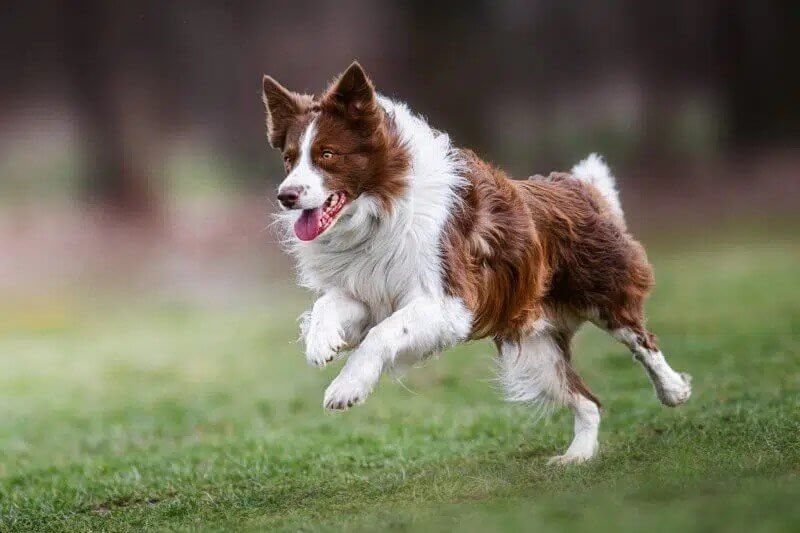

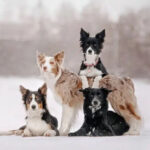



The Border Collie is a remarkably agile, intelligent, and energetic breed of dog, renowned for its herding prowess and unparalleled work ethic. Originating from the border regions between Scotland and England, the “Border” is not just a diligent worker, it is also a cherished companion for families in Great Britain and around the world.
Herding
18 – 22 Inches
30 – 55 Pounds
12 – 15 Years
| Country of Origin | England, Scotland |
|---|---|
| Bred For | Herding, Working Ability, Companionship |
| Known For | Intense Stare (“Eye”), High Energy, Intelligence, Biddable Stock Sense |
| Popularity | High |
| Temperament | Energetic, Affectionate, Smart |
| Activities | Herding, Running, Hiking, Conformation Shows, Dog Sports |
The Border Collie’s history is deeply intertwined with the rolling hills and rugged landscapes of the British Isles, where these dogs have been reliable herders for centuries.
The origins of the breed trace back to the Roman Empire’s occupation of Britain. The Romans introduced their larger, more robust sheepdogs to the region. When the empire’s control waned and the Vikings arrived with their smaller spitz-type herders, a natural amalgamation of breeds occurred. The mixing was likely the genesis of the earliest Border Collie.
The Border Collie’s refinement and distinction, however, truly began on the borderlands of Scotland and England, giving rise to its name. Here, the dogs were selectively bred for their herding prowess rather than for their appearance. They were celebrated for their keen intelligence and work ethic, and for their uncanny ability to herd sheep with minimal guidance from the shepherd, often using the breed’s signature “herding eye” to command and control the flock.
One notable event that elevated the breed’s status occurred in 1860 at a dog show in Birmingham, England, where “Scotch Sheep-Dogs” were first exhibited. However, perhaps the most iconic moment in the breed’s history was the performance of a dog named “Old Hemp” in the late 19th century. This dog’s herding style was less aggressive than that of similar sheep dogs, more controlled and highly efficient. Many canine historians consider Old Hemp the progenitor of the modern Border Collie due to his considerable influence on the breed and on breeders.
The Border Collie’s official recognition has been formalized by various kennel clubs and registries. The American Kennel Club (AKC) formally recognized the breed in 1995. Across the Atlantic, The Royal Kennel Club (UK) had already acknowledged the breed earlier in the 20th century. The Fédération Cynologique Internationale (FCI), an international canine organization, also recognizes the breed and promotes its interests in countries around the globe.
Today, the Border Collie is not just confined to the field for herding. The intelligence, agility, and versatility of the breed have made many individuals genuine stars in a wide variety of dog sports, and their loyalty and affectionate nature have endeared them to millions of dog lovers. While the breed has evolved from its early days on the British moors, the intrinsic herding nature of the breed remains a testament to its storied past.
The height of an adult male Border Collie typically ranges from 19 to 22 inches, while mature females usually stand between 18 and 21 inches tall.
In terms of weight, adult Border Collies generally weigh between 30 and 55 pounds.
The Border Collie is a dog of medium build that exudes a sense of graceful fluidity and balance. The breed’s length-to-height ratio is approximately 10:9, providing the dog with a slightly rectangular silhouette. This proportion ensures swift, ground-covering movement, essential for any herding activity. The Border’s substance is solid without appearing heavy or coarse, and its overall conformation exhibits strength and athleticism without sacrificing speed or agility. The typical Border possesses both endurance and agility, demonstrating the breed’s adaptability to various landscapes and tasks.
Texture: The Border Collie boasts a coat that can vary in texture and comes in two types; a coarse, rough coat that offers protection from the elements, and a sleek, smooth coat that showcases the dog’s contours. Both coat varieties are dense and weather-resistant, providing the necessary protection needed for a hard-working, all-weather dog.
| Standard Color | |
|---|---|
| Black | ee |
| Blue | ee |
| Blue Merle | ee |
| Red | ee |
| Red Merle | ee |
| Sable | ee |
| White & Black | ee |
| White & Blue Merle | ee |
| White & Red | ee |
| Lilac | ee |
| Saddleback Sable | ee |
| Sable Merle | ee |
| Gold | ee |
| Brindle | ee |
| White & Blue | ee |
| White & Red Merle | ee |
| White Ticked | ee |
| Seal | ee |
| White & Seal | ee |
| White & Gold | ee |
| Standard Marking | |
|---|---|
| Tan Points | ee |
| White Markings | ee |
| White Markings, Tan Points | ee |
| White Markings, Ticked | ee |
| White Mkngs, Tan Pts, Ticked | ee |
| White Markings, Brindle, Points | ee |
| White Mkng, Brindle Pt, Ticked | ee |
| Merle Markings | ee |
A Note About Color: Color and markings are of no functional concern in the breed, and white markings may be either clear or ticked with color to varying degrees. Random white patches on the body are acceptable; however, the color of the ears should be that of the body’s primary coat color.
The tail of the Border Collie is a natural extension of its agile and graceful form. Set on low and reaching at least to the hock, the tail can have a slight upward swirl, much like a shepherd’s crook. When the dog is working, the tail is carried low. When excited, it may be carried high. When the Border Collie is at rest, the tail hangs down naturally.
The hair on the Border Collie’s tail is dense and forms a bushy appearance, often referred to as a “brush,” especially on its underside. It’ i essential to note that this functional breed does not have its tail docked.
Owning a Border Collie is a rewarding experience that brings with it the joy of companionship with one of the most intelligent and agile dog breeds in the world. Known for its unmatched energy and responsiveness, the Border is not just a working dog, it also makes a loving family member. However, these dogs come with specific requirements and considerations that potential owners should be aware of to ensure a reciprocal relationship.
The Border Collie, like any other dog, can have health issues that prospective and current owners should be familiar with. Generally speaking, however, this purebred is robust and hardy, boasting a relatively long lifespan compared to some other breeds.
Lifespan: On average, a Border Collie’s lifespan ranges between 12 and 15 years, provided the dog receives proper care, a balanced diet, routine exercise, and regular veterinary check-ups.
While the Border Collie is generally a healthy breed, individuals can be susceptible to certain health conditions just like any breeds or mixed breed. Here are some of the issues that Border Collies might face:
Border Collie owners should schedule regular veterinary check-ups to detect early signs of these conditions and to discuss preventative measures if needed. Regular health screenings, a balanced diet, and routine exercise can go a long way towards ensuring a dog will live a long and healthy life.
The Border Collie’s personality showcases the breed’s remarkable intelligence, energy, and dedication. Recognized for its outstanding intellect, which ranks among the top among all dog breeds, this isn’t merely for show or agility. Instead, this intelligence has its roots in the breed’s long-standing role as herders.
Border Collies often have a keen sense of responsibility, making them superb workers and attentive companions. But, are they suitable for novice owners? While they are undoubtedly loyal and can be trained efficiently due to their intelligence, the Border Collie’s high energy and need for mental stimulation might pose challenges for first-time dog owners. The needs of this intelligent breed are better understood and met by those who have experience with very active dogs.
Sensitivity is another trait the Border Collie possesses in abundance. These dogs are often in tune with their owners’ emotions and can sense shifts in mood, which makes them excellent emotional support companions. However, this sensitivity means they don’t respond well to harsh training methods; positive reinforcement is key.
Border Collies deeply value companionship and staying active. If left alone for long stretches, they can become bored, which might lead to destructive behaviors. For times when they might be left alone, it’s beneficial to provide them with interactive toys or puzzles to keep them engaged.
As for their compatibility with other pets, Border Collies generally get along well with other dogs, especially if they’ve been socialized early. However, given their herding instinct, they might try to herd other pets, including cats, which can sometimes lead to conflicts.
The Border Collie’s interactions with young children are usually positive, but as with all breeds, supervision is essential. The herding instinct of this breed may prompt these dogs to try and herd children, especially if the kids are running. It’s crucial to teach children how to approach and touch dogs, and always supervise any interactions between dogs and young kids to prevent biting or ear-pulling from either party.
Lastly, when it comes to strangers, Border Collies are often reserved at first. While not aggressive, they might be wary of unfamiliar faces. Early socialization can help them become more open to meeting new people in any environment.
Proper nutrition is a cornerstone for maintaining the health and vitality of a Border Collie. These active dogs require a balanced diet that fuels their energy levels and supports their cognitive functions.
For Border Collie puppies, it’s crucial to offer a diet formulated specifically for their rapid growth phase. High-quality puppy food provides essential nutrients that cater to their developmental needs. As they transition to adulthood, their nutritional requirements change, and feeding them with premium adult dog food ensures they receive the right balance of proteins, fats, and other essential nutrients.
The amount of food a Border Collie needs can vary based on factors such as age, metabolism, activity level, and overall health. On average, an adult Border Collie might require about 1.5 to 2 cups of high-quality dry food daily, divided into two meals. However, this is a general guideline, and the specific needs can differ. It’s always wise to consult with a veterinarian or a pet nutritionist to determine the right portion sizes and feeding schedule for an individual dog.
Consistency in feeding routines can benefit the dog’s digestion and overall well-being. Setting specific meal times and sticking to them helps to establish a routine that the dog can anticipate and rely upon.
It’s also essential to monitor the Border Collie’s weight and adjust its diet accordingly. Overfeeding can lead to obesity, which brings a host of health issues. At the same time, underfeeding can leave a dog malnourished and lacking energy.
Lastly, fresh water should always be available for the Border Collie. Ensuring the dog stays well-hydrated, especially after exercise or play, is vital for optimal health.
Training a Border Collie is an engaging journey, one that leverages the breed’s sharp intellect and eagerness to please. Known for their remarkable intelligence, Border Collies often thrive with obedience and agility training.
Border Collies are notably easy to train due to their quick learning ability and inherent desire to work. Training sessions with these dogs tend to be rewarding and effective. Yet, their high intelligence can sometimes make them independent thinkers. For successful training outcomes, it’s essential to maintain consistency, show patience, and employ positive reinforcement methods.
Regarding vocal tendencies, Border Collies have a moderate tendency to bark, especially if they spot something unusual or if they’re left alone for extended periods. It’s beneficial to address excessive barking early on, teaching them commands like “quiet” or “enough” to manage their vocalizations.
One of the many facets of their intelligence is their keen, observant nature. This means that while they pick up commands swiftly, they’re also sensitive to their environment and can get distracted. Engaging their attention during training sessions is crucial.
Border Collies also have a wanderlust potential. Their curiosity can sometimes drive them to explore, so it’s essential to leash them during walks or have a secure fenced area for them to run. Recall training can be beneficial to be certain they always return when called.
As herding dogs, they can have a natural predation instinct. This might sometimes manifest when they’re playing, especially with fast-moving objects or animals. While this behavior is instinctual, early training and socialization can help to manage and redirect this tendency in a more controlled manner.
Originating from enthusiastic herding dogs, the Border Collie embodies energy, agility, and endurance. Addressing the breed’s exercise requirements is vital for its overall physical and mental health.
| Energy Level | High |
|---|---|
| Exercise Requirements | 2 Hours/Day (Minimum), Daily Walks, Vigorous Running, Regular Exercise, Playing with Another Dog, Mental Stimulation |
When it comes to exercise needs, Border Collies are among the breeds that require a substantial amount of physical activity. A simple walk around the block is unlikely to suffice. Instead, these dogs thrive on prolonged play sessions, challenging games, and activities that stimulate their mind and body.
In terms of energy level, they are undeniably high-energy dogs. Border Collies thrive on being active and are often on the move, whether it’s playing fetch, herding, or engaging in agility training. This inherent energy means they are not the best fit for sedentary households. Without adequate exercise, they can become restless, which might lead to unwanted behaviors.
As for intensity, the Border Collie is not one to lie idle. They engage in activities with a focused intensity, whether it’s chasing a ball or learning a new trick. This intensity is a hallmark of the breed, a testament to its working dog lineage.
Additionally, the Border Collie’s playfulness cannot be overstated. These dogs adore playing games, and their intelligence means they can quickly grasp and enjoy complex games like hide-and-seek or puzzle toys. Integrating play into their exercise routine can be a fantastic way to bond with them while also meeting their physical needs.
Grooming plays an integral role in the overall health and well-being of a Border Collie. The breed’s coat, while beautiful, requires regular attention to keep it in top condition and free from potential issues.
| Coat Type | Moderate Length, Smooth, Dense, Soft |
|---|---|
| Grooming Requirements | Weekly Brushing, Occasional Bathing, Routine Ear Cleaning, Periodic Nail Trimming, Regular Tooth Brushing |
The coat of a Border Collie is typically of medium length, with a texture that’s dense and weather-resistant. This dual-layer coat effectively protects these dogs from various weather conditions, be it rain or cold. While they’re not the heaviest of shedders, they do shed seasonally, especially during the spring and fall.
Border Collies have moderate grooming needs. Regularly brushing them at least once a week aids in removing loose hair, preventing matting, and spreading natural oils across their coat. This regimen can help to minimize the shedding of hair indoors and also provides an opportunity for the owner to check for skin conditions, parasites, or other potential concerns.
Despite the Border Collie’s moderate shedding, regular grooming can effectively manage and reduce the amount of hair that finds its way onto furniture and clothing. During peak shedding seasons, increasing the frequency of brushings can help immensely.
Other grooming essentials include regular nail trims, checking and cleaning the ears to prevent infections, and maintaining good oral hygiene through brushing or giving dental chews.
Living with a Border Collie is a unique and enriching experience that offers immense rewards, but it also requires dedication to meeting their specific needs.
Regarding apartment living, while a Border Collie can adapt to an apartment setting, it’s not the ideal environment for this active breed. If this dog is housed in an apartment, it’s paramount to ensure it gets ample exercise and mental stimulation daily. Access to open spaces, like safe dog parks or large enclosed yards, can greatly benefit the dog’s overall well-being.
Border Collies possess a thick double coat designed to shield them from diverse weather conditions. In cold weather, they’re naturally more resilient, thanks to their dense undercoat. This feature makes them well-suited for regions with chilly climates. However, it’s still essential to monitor them during extremely cold periods, ensuring they are not exposed for prolonged durations.
In contrast, hot weather can be more challenging for most Border Collies. Their thick coat can make them prone to overheating. During warmer months, it’s crucial to exercise them during the cooler parts of the day, like early mornings or late evenings, and always ensure they have access to fresh water. Shade, and possibly a kiddie pool, can also offer them relief from the heat.
The arrival of Border Collie puppies into a household is always a time of joy and excitement. These agile and intelligent pups, with their boundless energy and bright eyes, captivate hearts instantly. As with all puppies, they undergo accelerated growth and development in the initial months, so it’s vital for owners to be well-prepared and informed about their needs and tendencies.
Caring for a Border Collie puppy demands patience, attention, and understanding. As descendants of herding dogs, these puppies are naturally energetic and curious. Early socialization is key: introducing them to various sights, sounds, experiences, and people will ensure they grow up to be well-rounded dogs.
Diet plays a pivotal role in the healthy growth of Border Collie puppies. It is important to make sure they receive high-quality puppy food that meets their specific nutritional requirements. Regular vet check-ups are vital at this stage, with vaccinations and deworming schedules to be strictly followed.
Puppy-proofing your home is also essential. Remove any hazardous objects they might chew on and provide them with suitable toys to keep them entertained and mentally stimulated. Setting up a routine early, with designated feeding, play, and rest times, can help with instilling discipline.
Begin basic obedience training once they are a few weeks old. The Border Collie’s intelligence makes these dogs quick learners, but it’s also important to remember they’re still young and can be easily distracted. Training sessions should be short, consistent, and fun.
Above all, it’s essential to shower Border Collie puppies with love, attention, and care. They form strong bonds with their families, and a nurturing environment during their formative months will lay the foundation for a lifelong, loyal partnership.
The Border Collie’s innate intelligence, agility, and drive make it an exceptional participant in a wide range of activities and dog sports. Engaging them in these activities not only caters to their physical needs, it also provides essential mental stimulation.
Engaging a Border Collie in these activities and dog sports taps into the dog’s natural instincts and abilities. Participation fosters a deeper bond between the dog and the handler, and ensures the breed’s physical and mental needs are adequately met.
The Border Collie is recognized by the world’s leading registries and kennel organizations, which categorize the breed into a specific Group based on its unique characteristics. This breed is recognized worldwide under the following Group designations:
| Organization | Group Designation |
|---|---|
| AKC (American Kennel Club) | Herding |
| UKC (United Kennel Club) | Herding Dog |
| CKC (Canadian Kennel Club) | Herding |
| ANKC (Australian National Kennel Council) | Working |
| RKC (The Royal Kennel Club) | Pastoral |
| FCI (Fédération Cynologique Internationale) | Group 1: Sheepdogs and Cattledogs Section 1: Sheepdogs |
The ideal Border Collie is described by a Breed Standard that is approved by each of the world’s leading registries and kennel organizations. The Breed Standards for this breed may be found in the following links:
| Organization | Breed Standard |
|---|---|
| American Kennel Club | AKC Border Collie Breed Standard |
| United Kennel Club | UKC Border Collie Breed Standard |
| Canadian Kennel Club | CKC Border Collie Breed Standard |
| Australian National Kennel Council | ANKC Border Collie Breed Standard |
| The Royal Kennel Club | RKC Border Collie Breed Standard |
| Fédération Cynologique Internationale | FCI Border Collie Breed Standard |
Being a part of a breed club is an excellent opportunity for Border Collie enthusiasts to connect, share insights, and engage in activities that promote the breed’s welfare and heritage.
In the United States, the Border Collie Society of America (BCSA), established in 1990, stands as the primary breed club dedicated to the Border Collie. Established with a mission to preserve the breed’s working ability, the BCSA offers resources on breed health, training, and events while also hosting specialty shows and performance-based competitions.
Canada has the Canadian Border Collie Association, the organization that is committed to the protection and promotion of the breed within Canada, offering educational resources, organizing events, and emphasizing responsible breeding practices.
In the United Kingdom, the Border Collie Club of Great Britain serves as a guardian of the breed’s heritage. With a longstanding presence since its inception in 1973, the BCCGB champions the welfare of the Border Collie while offering members opportunities for competition, training, and camaraderie.
Joining a breed-specific club offers Border Collie owners and admirers a platform to celebrate and support these incredible dogs. Whether it’s through events and competitions or education and advocacy, these clubs play an essential role in ensuring the breed has a bright future.
Rescue groups play a pivotal role in providing a second chance for Border Collies that have been abandoned, mistreated, or need a new home. The dedicated efforts of these organizations provide dogs in need with proper care, rehabilitation, and eventually, loving forever homes.
In the United States, the Border Collie Rescue and Rehab organization stands out as a prominent group that dedicates itself to the rescue, rehabilitation, and rehoming of Border Collies. The organization’s efforts are not just limited to rescues but extend to educating the public on responsible dog ownership.
Canada is home to the Border Collie Rescue Ontario, a nonprofit that emphasizes rescuing and providing foster care for Border Collies in need. The group’s passion for the breed shines through its volunteers’ commitment to finding suitable homes that match the unique needs of each dog.
In the United Kingdom, the Border Collie Trust GB operates with a mission to rescue, rehabilitate, and rehome Border Collies and Collie crosses throughout the country. The extensive experience and dedication of its volunteer members ensure that each dog receives individual attention and care.
Yes, Border Collies shed. They have a double coat that sheds throughout the year, with a more pronounced shedding season typically occurring in the spring and fall. Regular grooming can help to manage and reduce the amount of hair that’s shed.
Border Collies have a relatively long lifespan for a dog of their size. On average, they live between 12 and 15 years. With proper care, regular veterinary check-ups, and a healthy lifestyle, some Border Collies can live even longer.
Male Border Collies usually stand between 19 and 22 inches tall, whereas females typically measure from 18 to 21 inches tall. Adult Border Collies commonly weigh in the range of 30 to 55 pounds.
No, Border Collies are not considered hypoallergenic. These dogs shed and produce dander, which can trigger allergies in sensitive individuals. It’s always advisable for potential dog owners with allergies to spend time with the breed first to see if there’s a reaction.
Absolutely! Border Collies are often touted as one of the most intelligent dog breeds in the world. Their sharp intellect, combined with their eagerness to please, makes them highly trainable and adept at a range of tasks, from herding to a variety of dog sports.
Border Collies are swift and agile runners. On average, they can reach speeds of up to 20 to 30 miles per hour, depending on their health, age, and physical conditioning. Their speed, combined with their intelligence, makes them exceptional herders.
Yes, Border Collies can be excellent with children, especially when properly socialized from a young age. They are often affectionate and even protective of their family members. However, due to their herding instincts, they might occasionally try to herd younger children. So, it’s essential to supervise interactions and provide proper boundaries for both the dog and the children.
Border Collies can be vocal, and they often bark to communicate and alert their owners, or when they’re simply bored or anxious. Their barking can also be a manifestation of their herding instincts. Proper training, mental stimulation, and regular exercise can help to manage excessive barking.

Explore the rich history of Border Collies, originating in Scotland and England, renowned as the world’s premier sheepherding dogs.

Interview with Steve Stochay, the handler of Border Collie “Wave,” AKC Humane Fund ACE Award Winner – Exemplary Companion Dog.
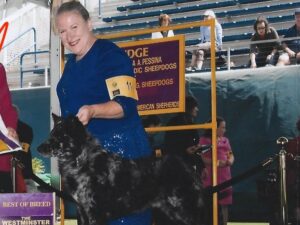
Interview with Rebecca Ingersoll, breeder of Twisted Acres Kennel – Insights on Mudi and Border Collie breeding.
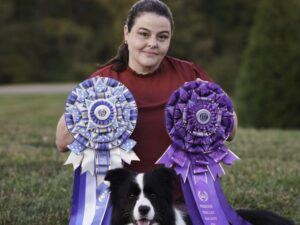
Experienced breeders of Arcane Kennel, Kelly and Kendra discuss breed types, health, and the dog show community.
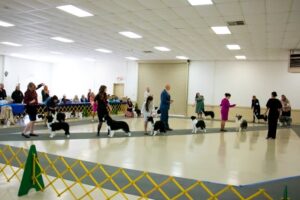
Ringside photos from the Border Collie Club of Northern California Specialty Shows, which were held on April 13, 2023, in Lodi, California

Interview with Kimberly Berkley, handler of a Border Collie known as “Zayne,” the 2022 AKC National Rally Championship Winner.
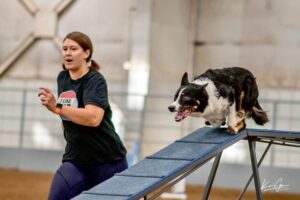
Caitlin Ascher, an AKC Agility League competitor, talks about how she got started in the sport of Agility, her Agility partner, and more!

Any good dog parent knows that ALL dogs have the potential to help us stay active. That being said, check out this list of energetic dogs.

Explore the rich history of Border Collies, originating in Scotland and England, renowned as the world’s premier sheepherding dogs.

Interview with Steve Stochay, the handler of Border Collie “Wave,” AKC Humane Fund ACE Award Winner – Exemplary Companion Dog.

Interview with Rebecca Ingersoll, breeder of Twisted Acres Kennel – Insights on Mudi and Border Collie breeding.

Experienced breeders of Arcane Kennel, Kelly and Kendra discuss breed types, health, and the dog show community.

Ringside photos from the Border Collie Club of Northern California Specialty Shows, which were held on April 13, 2023, in Lodi, California

Interview with Kimberly Berkley, handler of a Border Collie known as “Zayne,” the 2022 AKC National Rally Championship Winner.

Caitlin Ascher, an AKC Agility League competitor, talks about how she got started in the sport of Agility, her Agility partner, and more!

Any good dog parent knows that ALL dogs have the potential to help us stay active. That being said, check out this list of energetic dogs.
The best way to ensure a long and happy relationship with a purebred dog is to purchase one from a responsible breeder. Not sure where to begin?
Contact the National Parent Club’s Breeder Referral Program, which is listed on the AKC Breeder Referral Contacts page.
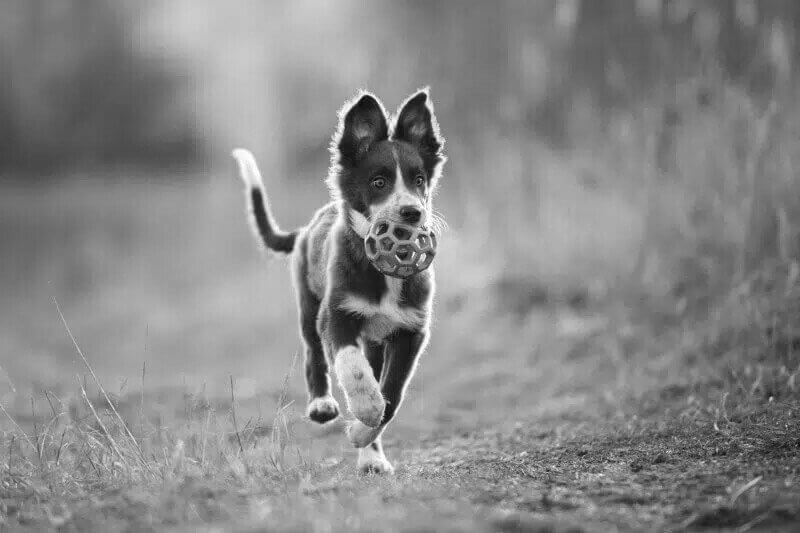

"*" indicates required fields
Showsight Magazine–the world’s most influential purebred dog publication since 1992. Each issue reaches a global audience dedicated to preserving the history and health of purpose bred dogs. Filled with award-winning editorial focused on news and insights from the dog show community, top breeders, handlers, AKC Judges, and more!